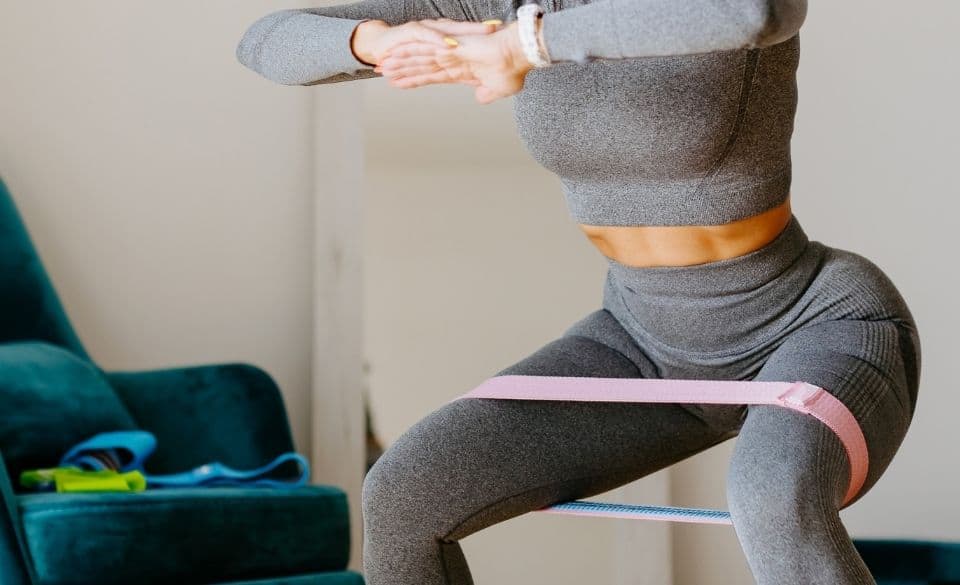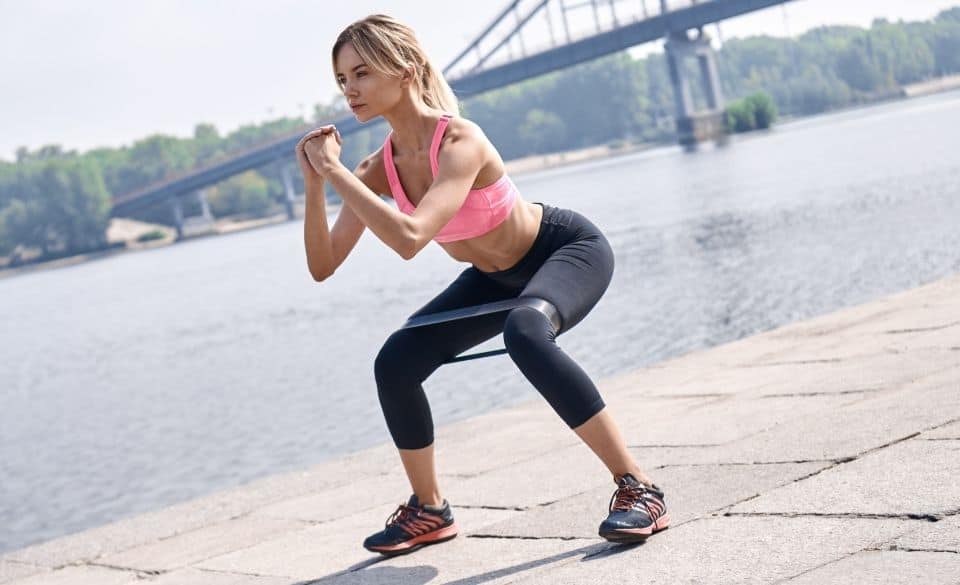
Banded Crab Walk For Runners – UPDATED 2021 – A Complete Guide
Page Contents
Gluteal muscles play an important role in our running stride, but strengthening it is often forgotten. Simple exercises like the banded crab walk for runners can help you develop gluteal muscles for a powerful and controlled running stride.
In this article, we look at what is a banded crab walk and how to perform the exercise. Keep reading to find out more!
Banded Crab Walk For Runners – A Complete Guide
Banded crab walk for runners is an excellent way for the runner to strengthen the glute and hip muscles in a weight-bearing position.
By using a resistance band and stepping outwards as you walk can help work and tension the gluteus medius under load.
When we run, strong glutes help to keep the pelvis aligned. They are also responsible for hip extension while running. So the hip muscles play an important role when we run and shouldn’t be forgotten about.
So how do you perform the banded crab walk?
1. First, start by picking the correct level of resistance band. Usually, this is shown by the color of the band. The level of resistance should cause fatigue within 6-8 steps.
2. Place the resistance band or elastic band slightly above the knees. It should stay up by itself.
3. Open the legs slightly wider than hip-width. Then turn the feet outwards.
4. Stretch the resistance band by rotating the quadriceps outwards so the knees are in line with the feet. Once the knees are inline you should feel the glutes contract.
5. Lower yourself into a squat position and stick your bottom out slightly. Keeping in the same position as step 4.
6. While keeping your upper body still, step to the side and keep the other leg still, holding the tension of the band.
7. Now with the opposite leg take half a step inwards. Make sure you talk short steps rather than big ones so you can keep the tension of the resistance band.
8. Repeat each step in a controlled motion, making sure the inner foot doesn’t move inwards. Once you have performed 8 steps, swap and lead with the other leg.
If you are starting out with the banded crab walk it is important that you start with a low resistance band. This will allow you to focus on good technique and not overload the glute muscles too much in the beginning. As you get more confident and stronger in the glutes, you should then increase the resistance.

Resistance Band Crab Walk – Getting Started
To get started with a resistance band crab walk, start by using a low resistance band. The key to performing a good band crab walk is to keep good technique and form during the exercise.
There are typically four levels of resistance bands available on the market:
– Light
– Medium
– Heavy
– Extra Heavy
For the runner beginning the band crab walk exercise for the first time, the light resistance band is recommended. Once you start to feel less fatigue after 6-8 steps, you can then move into the next resistance level, which is the medium resistance.
When starting, begin with 6-8 steps before switching to the other leg. It is important with each step you prevent the inner foot from getting pulled inwards by the resistance band. This movement is what works the gluteal muscles during each step.
Crab Shuffle Exercise
The crab shuffle exercise is just another name for the banded crab walk. However, there are some variations around that differ slightly from the original resistance band crab walk.
Above is a video of how to perform the crab shuffle correctly with resistance bands.
Banded Crab Walk Muscles Worked & Other Benefits
When you perform the banded crab walk with a tensioned resistance band, you primarily work the Gluteus Maximus when the knees are externally rotated. Then when you step outwards you start to work the Gluteus Medius. These are the main muscles used in the crab walk, but other areas such as the lower back, quadriceps, and arms are used also.
Strengthening the glute muscles is not the only benefit for the runner. The crab walk also helps to strengthen the knees, which can benefit the runner that overpronates or the trail runner that needs stronger ankles.
So performing this exercise a few times a week can help the runner strengthen the glute muscles if they are not activating them enough during their running stride. It also helps to prevent the pelvis from rotating backward while running, forcing the runner to use their lower back to stabilize their pelvis.
In summary, if you are someone that struggles with lower back pain while running or lack of knee drive, the banded crab walk for runners is the perfect exercise.



